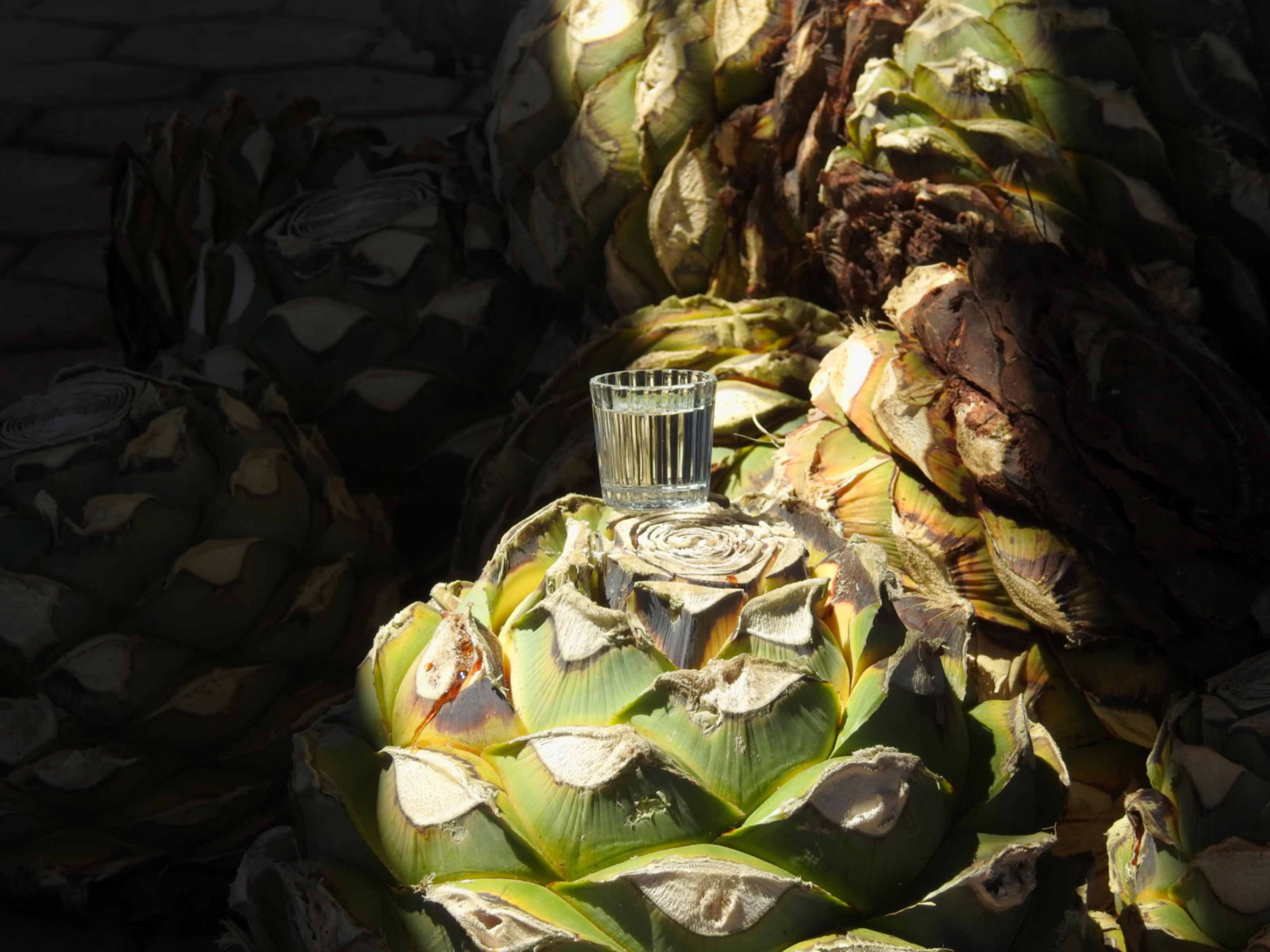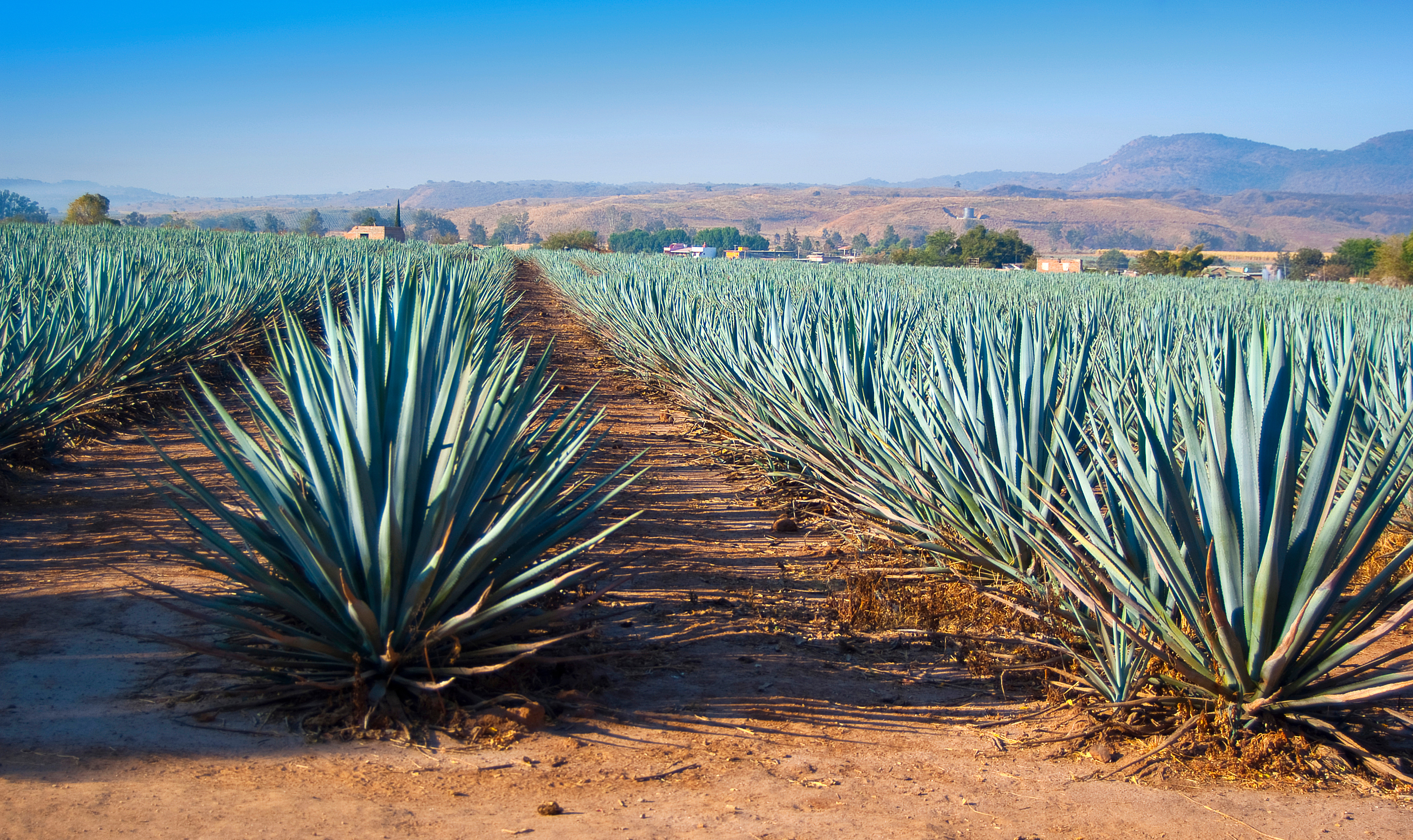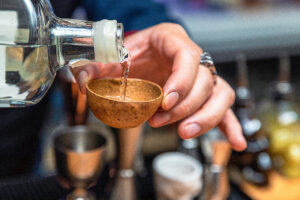 Long before whisky and other spirits were being developed and refined in Europe, the first people of Mexico had discovered how to ferment the sweet centres of the agave cactus, also known as maguey, creating the distilled spirits that we now know as tequila and mezcal.
Long before whisky and other spirits were being developed and refined in Europe, the first people of Mexico had discovered how to ferment the sweet centres of the agave cactus, also known as maguey, creating the distilled spirits that we now know as tequila and mezcal.
Tequila has enjoyed huge market growth globally over the past ten years, as consumers around the world have become more familiar with Mexico’s distilled spirits. Once known as the drink of choice for college parties, tequila now appeals to sophisticated consumers who are intrigued by the smoothness of a high-quality spirit, that can compete with other luxury drinks such as cognac, whisky, or brandy. Similarly, the sharpness of a younger tequila lends an exciting contrast to sweet cocktails such as margaritas; pairing itself perfectly with salty snacks or a bite of lime.
Happily, the world has also discovered an appreciation for mezcal, a smoky cousin to tequila that pairs beautifully with sweeter citrus fruits and earthy spiciness. Production of mezcal has risen exponentially, from 1 million litres in 2011 to over 8 million litres in 2021.
So, what’s the difference between Mezcal and Tequila? Let’s dig in and find out!
The generic term for these distilled beverages obtained from agaves is mezcal, which derives from the Nahuatl mexcalli, from metl, maguey, and ixca, to cook or bake, i.e., cooked, or baked maguey (Blomberg, 2000; Bowen, 2015). Mezcal is the family of these spirits and is defined as any type of distilled spirit that is made from the agave cactus. Similar to whisky, where both bourbon and scotch are whiskies, but not all whiskies are bourbon or scotch, tequila and mezcal are both mezcals, but not all mezcals are tequilas. Tequila is made only from blue agave (agave tequilana), but mezcal can be made from several types of agave cactus.
Only products made in Mexico can be labelled Tequila or Mezcal. Tequila is produced only in the state of Jalisco. Mezcal can be produced in Durango, Guanajuato, Guerrero, San Luis Potosi, Tamaulipas, Jalisco, Zacatecas, Michoacan, Puebla and Oaxaca.
How is Mezcal and Tequila Distilled?

Agave field
Agave plants produce long spiky leaves that look like overgrown aloe vera plants. It takes between six and ten years for them to fully mature.
Tequila is only made from the blue agave. Blue agave is planted by hand in large plantations that paint the Mexican countryside with extensive blue patches. When the plant is ready to be harvested, the ‘jimador’, or harvester, removes all of the leaves of the plant and exposes its heart, called the piῆa, or ‘pineapple’, because it resembles a pineapple in appearance.
The pinas are then steamed, to soften the agave fibers and extract the sugar from the centre. After this is completed the pinas are crushed in a milling process to release the nectar they hold inside. This is fermented into alcohol, and distilled to create tequila. This distillation process determines the quality of the tequila; some of the smoothest tequilas have been distilled 3 times to refine their flavours. Then the tequila is either bottled or aged in oak barrels.
Tequila is aged as follows:
- Blanco or Silver Tequila: 0 – 2 months
- Reposado Tequila: 2 – 12 months
- Anejo Tequila: 1 -3 years
- Cristalino Tequila: 1 – 3 years, then filtered to remove the colours and oakiness it picks up from the barrel.
Mezcal is made from several types of agave cacti. They are harvested similarly to tequila, but their distillation process is much more artisanal. The agave pinas are cooked slowly in firepits in the ground. This process imparts a heavy smokiness to mezcal which remains with it throughout the distillation process. The cooked pinas are crushed, and fermented in wooden barrels. After the fermentation process is complete, the agave mash is then distilled twice and blended to smooth its finish. Then it is either bottled or aged in oak barrels.
Mexican regulations (NOMs) classify mezcal as Mezcal, Artisanal Mezcal, or Ancestral Mezcal, depending on the specific process that is used for crushing or grinding, fermentation and distillation. This process is outlined in (Table 1)¹:

TABLE 1. Allowed process configurations of the different mezcal categories (NOM). ¹ https://www.frontiersin.org/articles/10.3389/fsufs.2022.832532/full#T1
Mezcal is aged as follows:
- Blanco or Joven Mezcal: 0 – 2 months
- Reposado Mezcal: 2 – 12 months in wooden containers
- Madurado en Vidrio: – aged in glass containers for more than 12 months
- Anejo Mezcal: 1-year minimum in wooden containers
What does it taste like?
 The taste of these spirits is highly dependent on the terroir of the region where the agave plants are grown, as well as the age and distillation process of the product. Blanco tequilas which are aged the least are quite earthy with a sweet aftertaste. Reposado tequila is softer on the palate with an oaky earthiness, and Anejo tequila has a caramel colour and a stronger oak finish due to the longer time in the barrel. Cristalino tequila is less known than the other varieties but is quickly gaining in popularity because of its crisp clarity and smoothness. It has a sweeter finish than the other tequilas and vanilla notes can be perceived in some varieties.
The taste of these spirits is highly dependent on the terroir of the region where the agave plants are grown, as well as the age and distillation process of the product. Blanco tequilas which are aged the least are quite earthy with a sweet aftertaste. Reposado tequila is softer on the palate with an oaky earthiness, and Anejo tequila has a caramel colour and a stronger oak finish due to the longer time in the barrel. Cristalino tequila is less known than the other varieties but is quickly gaining in popularity because of its crisp clarity and smoothness. It has a sweeter finish than the other tequilas and vanilla notes can be perceived in some varieties.
Mezcal’s taste is heavily influenced not only by the terroir of the region where it has been produced, but also by the type of up to 30 varieties of agave cactus that have been used to make it, and what it has been smoked with. Mezcal master blenders, known as Maestros, sometimes impart new flavours into their ancient recipes by adding other elements to the distillation process. These are disclosed on the bottles as: “Abocado con” (mezcal that incorporates ingredients to add flavours, such as maguey worm, damiana, lemon, honey, orange and mango, among others) and finally “destilado con” (mezcal that must be smoked or distilled with ingredients to add flavours, such as turkey or chicken breast, rabbit, plums, among others).
Flavours vary significantly between bottles and brands and can be floral, fruity, or earthy depending on the variety. The best way to discover a mezcal that speaks to you is to sample several and compare them.
Most bottles of mezcal will have a registration number on them, which indicates the lot and date of manufacture of each bottle. Many brands also include the name and signature of the Maestro, or Master Blender, who distilled it.
How do I drink it?
Blanco tequila is a wonderful base for many cocktails. More refined tequilas are often best enjoyed neat, in a small snifter or Mexican “Caballito”, which looks like a tall shot glass. These tequilas are meant to be savoured, not consumed in shots.
Multiple cocktails are now being developed that use mezcal as a way of infusing the smokiness to a sweeter blend, but it is also good on its own. It is best consumed in a small snifter glass or whisky glass that opens up its flavour profile.
Where can I buy it?
In Canada, each province and territory have Liquor boards that import tequila and mezcal. Local liquor stores should have a selection of the largest brands, and if you know of one that you like but aren’t able to find, ask your local distributor if they can source it for you.
Please Consume Responsibly!
Whether your preference is for tequila or mezcal, or another spirit, always consume alcoholic beverages responsibly.

